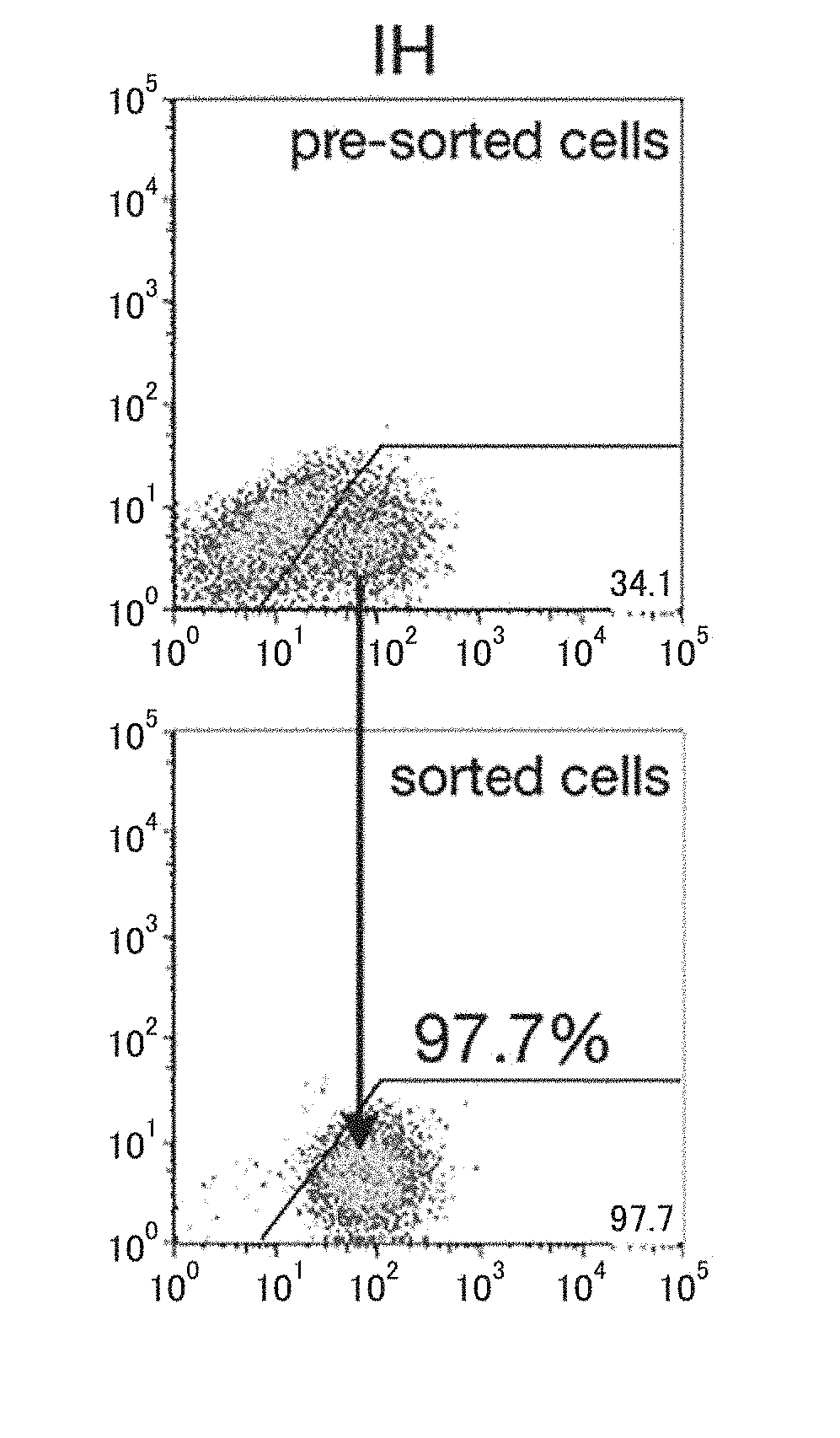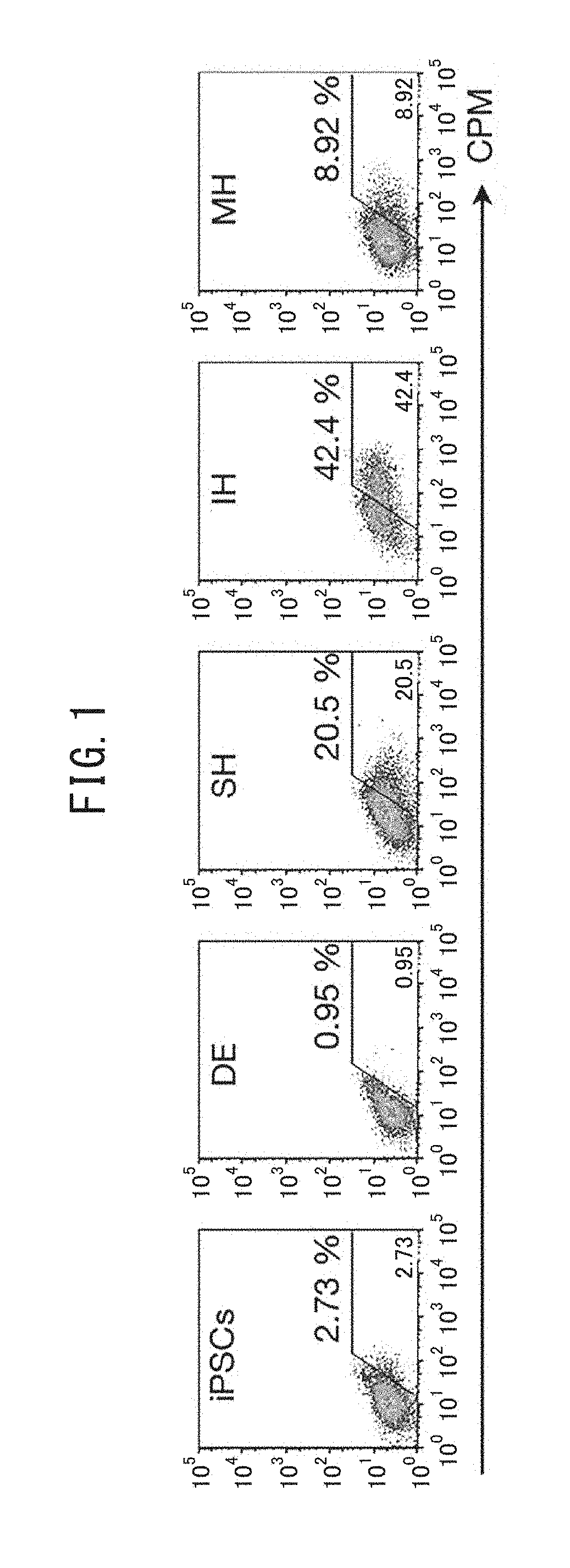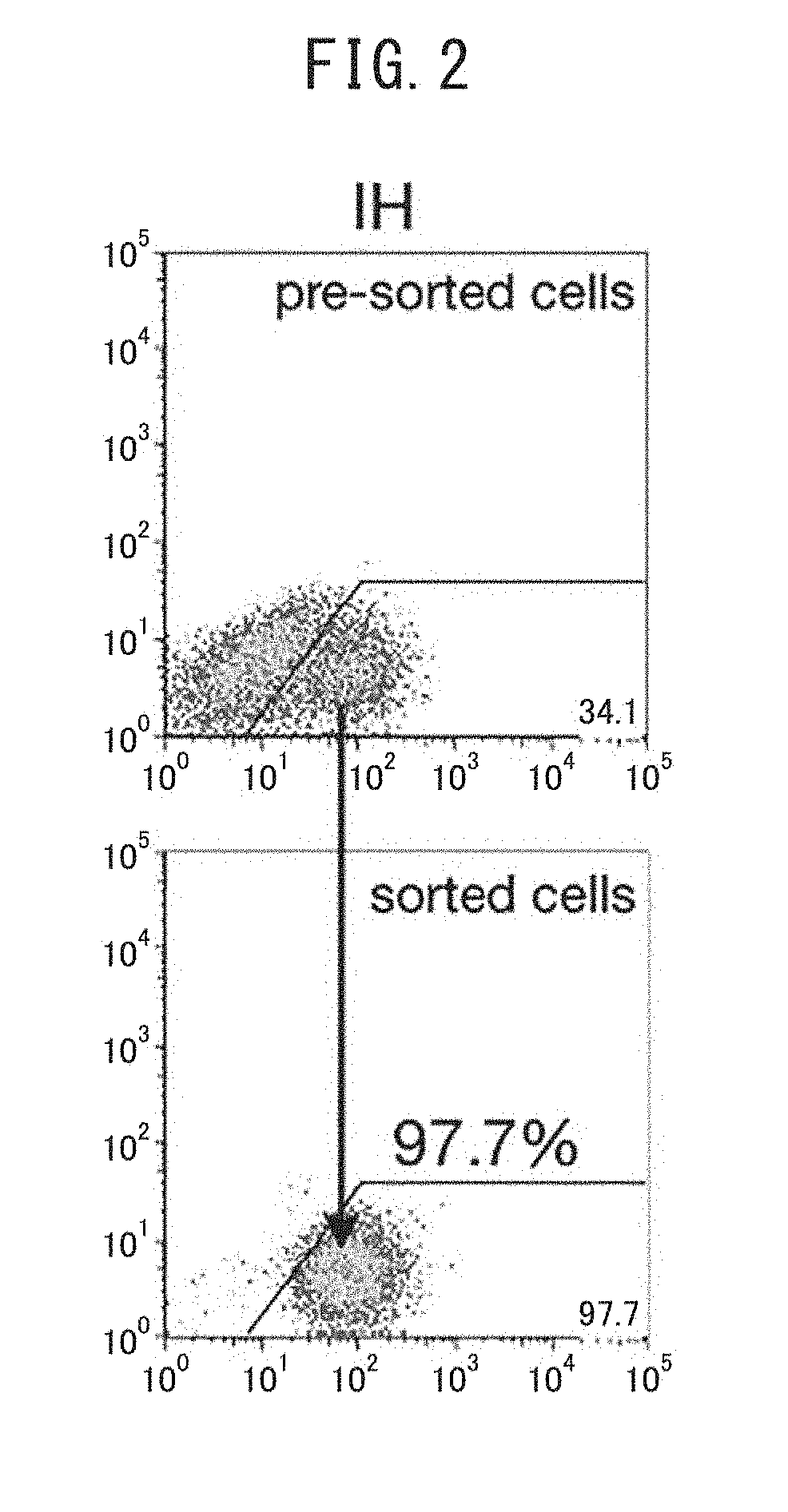Hepatocytes and hepatic non-parenchymal cells, and methods for preparation thereof
a technology of hepatocytes and non-parenchymal cells, which is applied in the field of hepatocytes and hepatic non-parenchymal cells, and methods for preparation thereof, can solve the problems of difficult to provide human hepatocytes in large quantities from human organs, and rapidly lose their metabolic enzyme activity when cultured, and achieve high purity and efficient manner
- Summary
- Abstract
- Description
- Claims
- Application Information
AI Technical Summary
Benefits of technology
Problems solved by technology
Method used
Image
Examples
example 1
(1) Preparation of Human Liver Progenitor Cells
[0236]Human iPS cells (454E2, RIKEN Cell Bank) were induced to differentiate into human liver progenitor cells by the following procedure described in NPL 2 (Si-Tayeb et al., Hepatology 2010, 51(1), 297-305). The human iPS cells were cultured for 5 days in RPMI medium containing B27 and 100 ng / ml activin A, in an environment of 5% CO2, ambient oxygen. They were then cultured for 5 days in RPMI / B27 medium with addition of 20 ng / ml BMP4 and 10 ng / ml FGF2, in an environment of 4% O2 / 5′ CO2. They were subsequently cultured in RPMI / B27 medium with addition of 20 ng / ml hepatocyte growth factor (HGF) in an environment of 4% O2 / 5% CO2 for at least 10 days, to obtain a cell group including human liver progenitor cells. A MoFlo XDP cell sorter (Beckman Coulter) was used to separate the human liver progenitor cells (CPM-positive cells) and CPM-negative cells from the cell group. The separation could also be carried out in the same manner using an ...
example 2
[0241](1) Inducing Differentiation from Human Liver Progenitor Cells to Human Hepatocytes.
[0242]As described in NPL 2, the CPM-positive cells that had been proliferated to confluency in Example 1(2) were incubated for 5 to 10 days in hepatocyte basal medium (Lonza) with addition of HCM Single Quots (excluding EGF) and oncostatin M (20 ng / ml) (PeproTech), to induce differentiation to human hepatocytes.
(2) Albumin Production and Glycogen Storage
[0243]Observation of progenitor cells before differentiation inducement and hepatocytes obtained by differentiation inducement with a bright-field microscope, observation of albumin in the cells with immunocytochemical staining, and observation of glycogen accumulation in the cells with PAS staining are shown in FIG. 6. The PAS staining was carried out according to standard protocol, using Cold Schiff's Reagent (Wako Pure Chemical Industries, Ltd.). Higher albumin production and higher glycogen accumulation were confirmed in the hepatocytes obt...
example 3
[0245](1) Inducing Differentiation from Human Liver Progenitor Cells to Human Cholangiocytes
[0246]The three-dimensional gel culturing method described in Tanimizu et al., Mol Biol Cell, 2007, 18(4), 1472-1479 and Yanagida et al., PloS ONE 8, e67541 was slightly modified for inducing differentiation to human cholangiocytes. After proliferating CPM-positive cells according to Example 1(2), the cells were collected and resuspended in gel composed of a 2:3 mixture of growth factor reduced Matrigel (Corning) and collagen type I (Nitta Gelatin), to a density of 1×105 cell / 50 μl. The cell suspension was then added to a 24-well plate (Corning) and incubated at 37° C. for 2 hours until solid. The cells were then cultured for 7 days in the presence of R-spondin-1 (40 ng / ml) and WNT-3a (40 ng / ml) (PeproTech), to induce differentiation to human cholangiocytes. The human cholangiocytes formed a cyst.
(2) Expression of Cell Markers
[0247]The expression level of AFP, a hepatocyte precursor marker, d...
PUM
 Login to View More
Login to View More Abstract
Description
Claims
Application Information
 Login to View More
Login to View More - R&D
- Intellectual Property
- Life Sciences
- Materials
- Tech Scout
- Unparalleled Data Quality
- Higher Quality Content
- 60% Fewer Hallucinations
Browse by: Latest US Patents, China's latest patents, Technical Efficacy Thesaurus, Application Domain, Technology Topic, Popular Technical Reports.
© 2025 PatSnap. All rights reserved.Legal|Privacy policy|Modern Slavery Act Transparency Statement|Sitemap|About US| Contact US: help@patsnap.com



